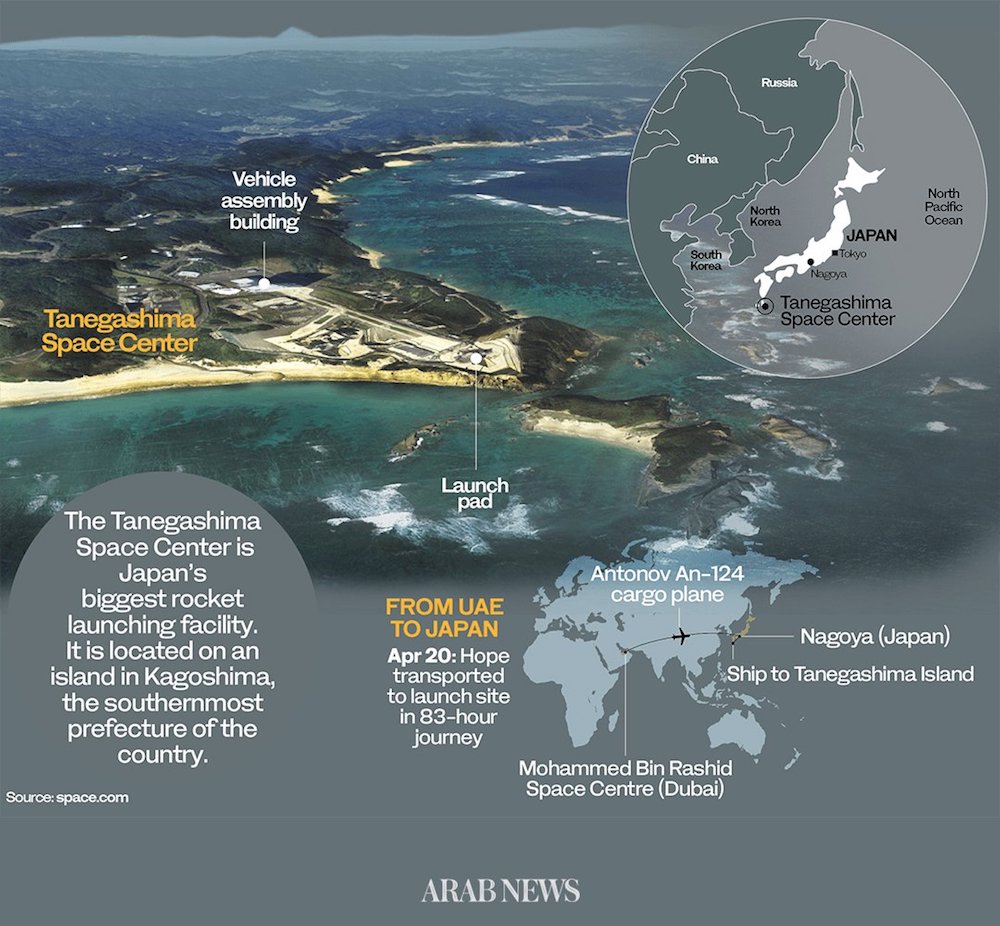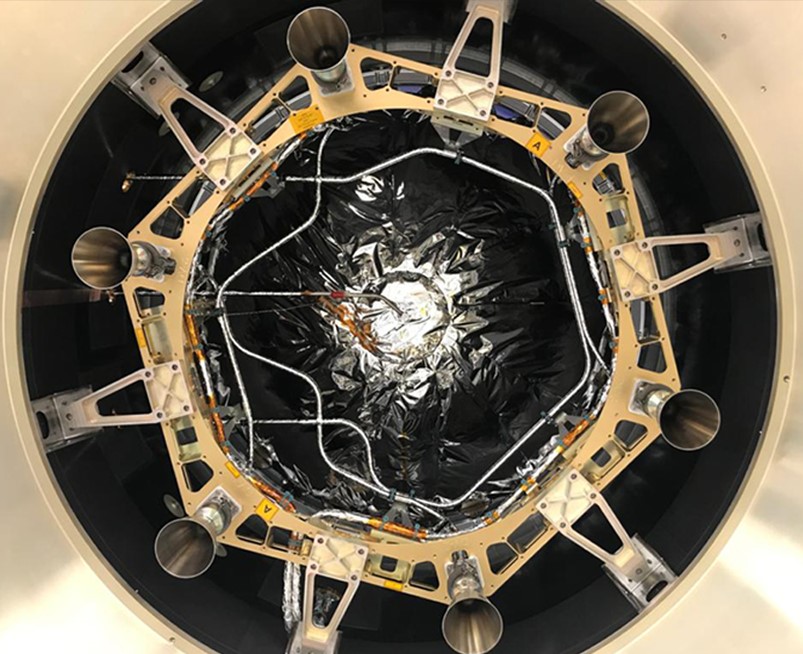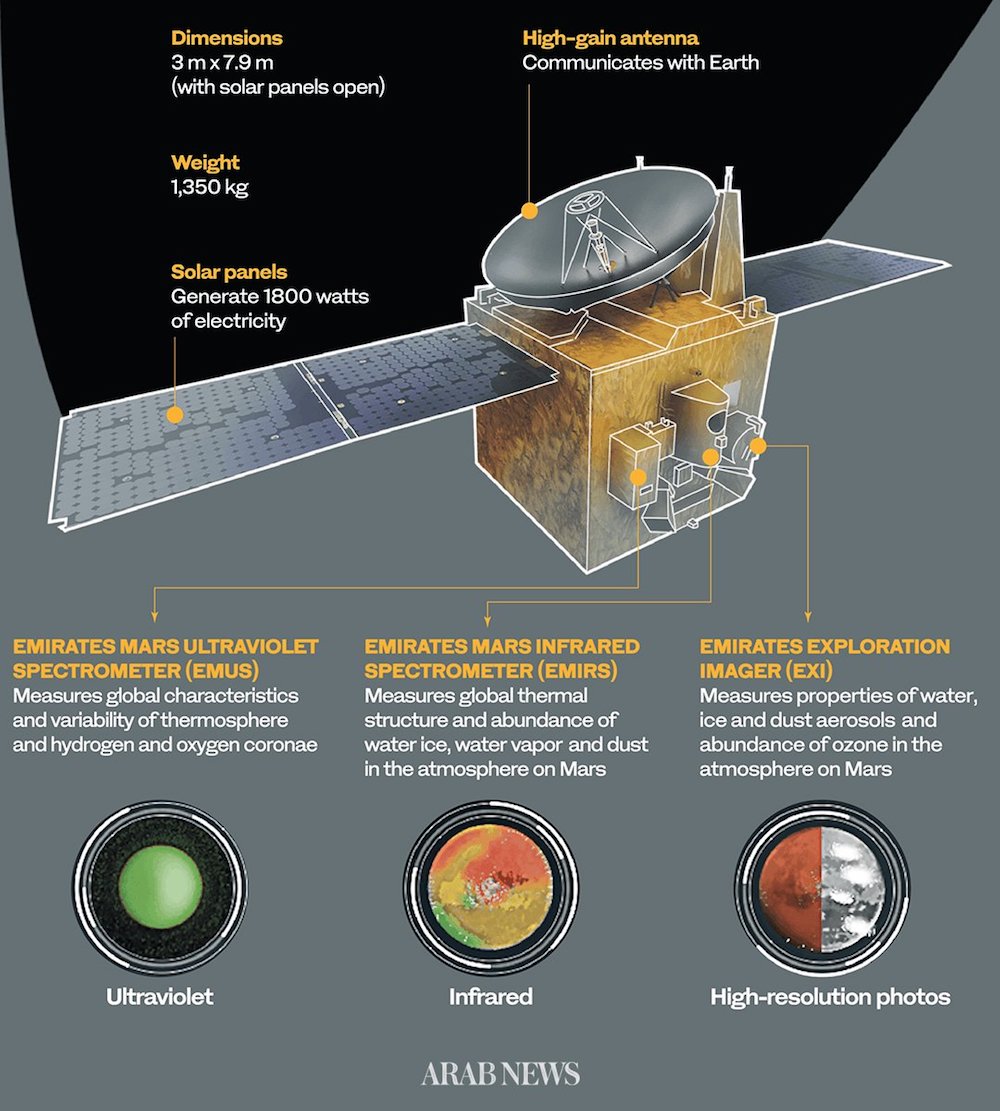LONDON: The first major milestone for the Emirates Mars Mission (EMM) has passed after a successful completion of the Mars Hope probe’s first trajectory correction maneuver (TCM).
The completion of the TCM marked the first firing of the probe’s Delta-V thrusters, and will see the spacecraft remain on target for Mars orbit, Emirates News Agency reported.
“TCM1 was a major milestone for us, not only because it is the first time we have deployed the spacecraft’s Delta-V thrusters, but also because it defines our path to cruise Mars,” EMM Project Director Omran Sharaf said.
“Hope has exceeded our expectations and is now on target to reach its Mars Orbit Insertion (MOI), requiring less adjustment to its course than we had originally planned,” he added.
Having launched from the Tanegashima Space Center in Japan on July 20, the Mars Hope probe will make a further seven TCMs during its 493 million kilometer journey to the red planet.

In order to meet planetary protection protocols, Mars and other planetary missions are typically launched on an initial flight path intended to “miss” the planetary target until tests have confirmed the spacecraft is performing correctly, mitigating the chance of a crash on the planet’s surface and subsequent potential contamination with Earth-originating pathogens.
The Mars Hope probe’s MOI is scheduled to take place early in February 2021. Mission organizers hope the probe can build the first full picture of Mars’ climate throughout the Martian year.

The Emirates Mars Mission (EMM), the first interplanetary mission undertaken by an Arab nation, has announced the successful completion of TCM1 – its first trajectory correction maneuver. (Emirates News Agency)
Hope’s mission is focused on atmospheric dynamics, exploring Mars while sampling both diurnal (daily) and seasonal timescales, which has never been done during previous Mars missions.
For the first time, scientists based at over 200 universities and research institutes globally will have access to a holistic view of the Martian atmosphere at different times of the day, through different seasons.

Weighing more than 1,300 kilograms and roughly the size of a small SUV, Hope is a fully autonomous spacecraft, carrying three instruments to measure Mars’ atmosphere.
It was designed and developed by engineers at the Mohammed bin Rashid Space Center, who worked with academic partners, including LASP at the University of Colorado, Boulder; Arizona State University and the University of California, Berkeley.



























